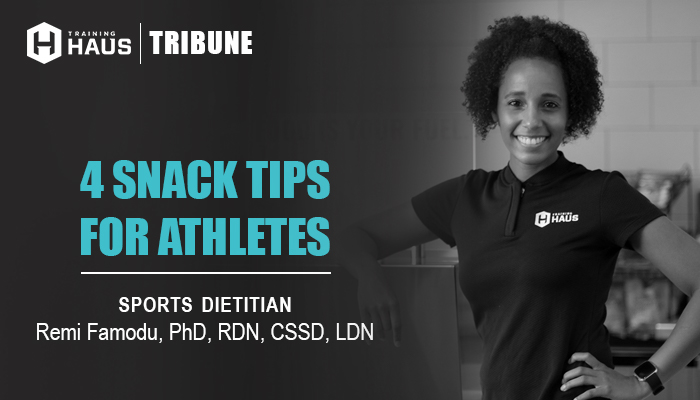
4 HEALTHY SNACK TIPS FOR ATHLETES
CHOOSING THE RIGHT SNACKS FOR ATHLETES
Ever experienced being very hungry at the end of the day even though you consumed breakfast, lunch and dinner? Ever notice that your body is continually fatigued mentally and physically, even though you haven’t changed your daily routine? The answer to these questions might lie within what you are or are not eating in between your meals.
Athletes spend a significant amount of time training their bodies and minds every day, which puts them through high levels of stress. Therefore, it is important to fuel your body right to help the body recover and continue to increase strength, agility and endurance. Eating a proper snack every couple of hours is the best way to do this because it provides your body with the nutrients it needs to initiate the body’s processes that are necessary for energy and recovery. Healthy snacking is important to help control blood sugar, appetite, weight and boosts mental performance. The number and type of snacks are dictated by hunger in addition to academic, athletic and sleep schedules.
AM I HUNGRY FOR A SNACK?
Being able to recognize when you are hungry and might need a snack is important. Having stomach pangs is a way to tell you are hungry, but the time has passed for when you SHOULD have eaten. Alternatively, just because it has been a couple hours since your last meal, doesn’t mean you SHOULD have something to eat, especially if there was no activity since then. Here are some common signs that you are hungry:
- Fatigue
- Irritable
- Shaky
- Headaches
- Poor concentration
- Sleep disturbances
4 Tips to choosing the right snack
Distinguishing your hunger cues help you to determine when you need a healthy snack versus when you are just craving a treat. Healthy snacks combine certain food groups and are timed right based off your training and your weight goals. Versus a treat usually comes with “empty” calories (lacking nutrients), and typically satisfies a craving. Using the tips below will help you determine the right type of snack that can ensure proper fueling and enhance muscle recovery.
1. Choose the right carbohydrate
Carbohydrates provide the body with the energy it needs to be able to utilize protein to its maximum capacity. Carbohydrates should be given to the body before, during, and after the workout to optimize training, help the body maintain adequate fueling, and alleviate any energy deficit that may have occurred during the workout. Simple carbohydrates, like fruit, enriched grains, and dairy, should be consumed closer to the activity as these are easily digestible and increase energy quickly. Complex carbohydrates, such as vegetables, beans and whole grains, are usually slower to digest and can be consumed when there is more time in between activity.
2. Don’t forget the protein
Many nutrients work in a synergistic effect meaning consuming them together enhances their positive effects on the body. When it comes to protein, like almonds, try to pair it with a carbohydrate like dried fruit, chocolate, or bread. Pairing protein with carbohydrates helps to make the energy last longer, like wood logs to a fire. Moreover, protein is more effective on the body when consumed throughout the day rather than in large amounts because the body can only metabolize certain amounts at one time and grazing on it can help maintain muscle mass or even build it.
3. Timing is everything
Regardless of the important role of snacking, many athletes falsely believe that snacking is bad and may be detrimental to weight goals. Regardless of whether you are trying to lose, maintain, or gain weight, having two to four health snacks per day is essential to keeping energy high and metabolism steady. Choose easily digestible or light snacks like a sports drink, carbohydrate chews/gel, or whole fruit is better consumed closer to activity. It’s important that a snack containing carbohydrates and protein be consumed after a workout, usually within 30-45 minutes to initiate recovery. After a workout many of your body’s cells need to be replenished, and carbohydrates are the body’s first choice for fuel. Furthermore, protein is important to consume after a workout because your body needs the building blocks to build more muscle.
FOOD FOR THOUGHT: You may be wondering why we haven’t asked you to eat high fiber or healthy fat foods for snacks most of the time because they are so nutrient dense? Well the reason being is that snacks that are high in fat and fiber can be detrimental to eat right before a workout. These types of foods typically slow down digestion and could lead to a stomachache if consumed too close to an activity. Therefore saving a snack like edamame or guacamole and chips for after an activity or in a meal is ideal.
4. Plan ahead
Ever heard of the saying, not preparing to plan is like planning to fail? Keeping portable, nonperishable snacks in your bag, your car, your desk, or your locker, will help you to stick to your plan and reduce the need to overeat at the end of the day. An instant oatmeal packet with trail mix, a premade peanut butter and jelly sandwich, whole fruits with granola, single serve almond butter packets with pretzels, and nutrition bars are all good options that also make for a well-rounded snack. If you can, take 5 minutes out of your day to create a plan for your snacks. When planning the day ahead, think about what snack you would like to incorporate and when is the best time to incorporate the snack. In addition, it is helpful to plan snacks ahead of time because that way they can be adjusted depending on the timing and intensity of the workout planned for that day.
BONUS: Snack examples & RECIPE
Below are a list of snacks that may help you to dictate whether you choose a light snack (weight management or close to activity), moderate snack (in between meals and 1 hour or more before activity) or a heavy snack (a mini-meal or after a workout).
- Light snacks: frozen, fresh, canned (in water or own juice) or dried fruit, veggies, graham crackers, dried cereal, pretzels, Greek yogurt, low-fat pudding, Jell-O, 100% fruit snacks or fruit bars, Sports drink or fruit juice
- Moderate snacks: fruit with nut butter, crackers with nut butter, trail mix, sunflower seeds, oatmeal, cereal and milk, popcorn, string cheese, jerky, *Greek yogurt parfait, granola bar, veggies or pretzels with hummus, soup, smoothies, low-fat milk
- Heavy snacks: peanut butter and jelly on whole grain bread or bagel, panini or wrap with lean deli meat, grilled chicken/chicken salad, egg salad or tuna, cheese and crackers, waffles or pancakes with nut butter, omelet, baked potato with salsa or cheese, high protein smoothie or sports bar, cottage cheese and fruit
Greek Yogurt Parfait Recipe
What is high in protein, low in sugar, high in calcium and so good it can pass as a dessert? A yogurt parfait! Parfaits are one of my favorite snacks that can be eaten at any interval during the day. Try the simple recipe below or create your own at home. Trust me; there is no way to mess it up.
Author: Bailey Sissom
Prep Time: 5 mins
Cook Time: 0 mins
Yield: 8 jars
INGREDIENTS
- 1 32ox container of whole milk plain yogurt, organic recommended
- 3 Tbs. honey
- 1 lb. of fresh or frozen berries
- 5-2 cups of granola
INSTRUCTIONS
- Add honey to the container of yogurt. Stir well.
- In mason jars, layer yogurt and berries. Top with granola before eating.
NOTES
- Yogurt parfaits will keep in the refrigerator for several days. The granola will get soggy, so recommended to top with granola before eating.
Final thoughts
Overall, it is important to fuel your body so that it can perform to the best of its abilities. Remember that you are what you eat. In order to achieve your athletic potential, you need to choose not only healthy foods at meals, but also the right, healthy foods at snacks.
– Remi Famodu, PhD, RDN, CSSD, LDN | Sports Dietitian

